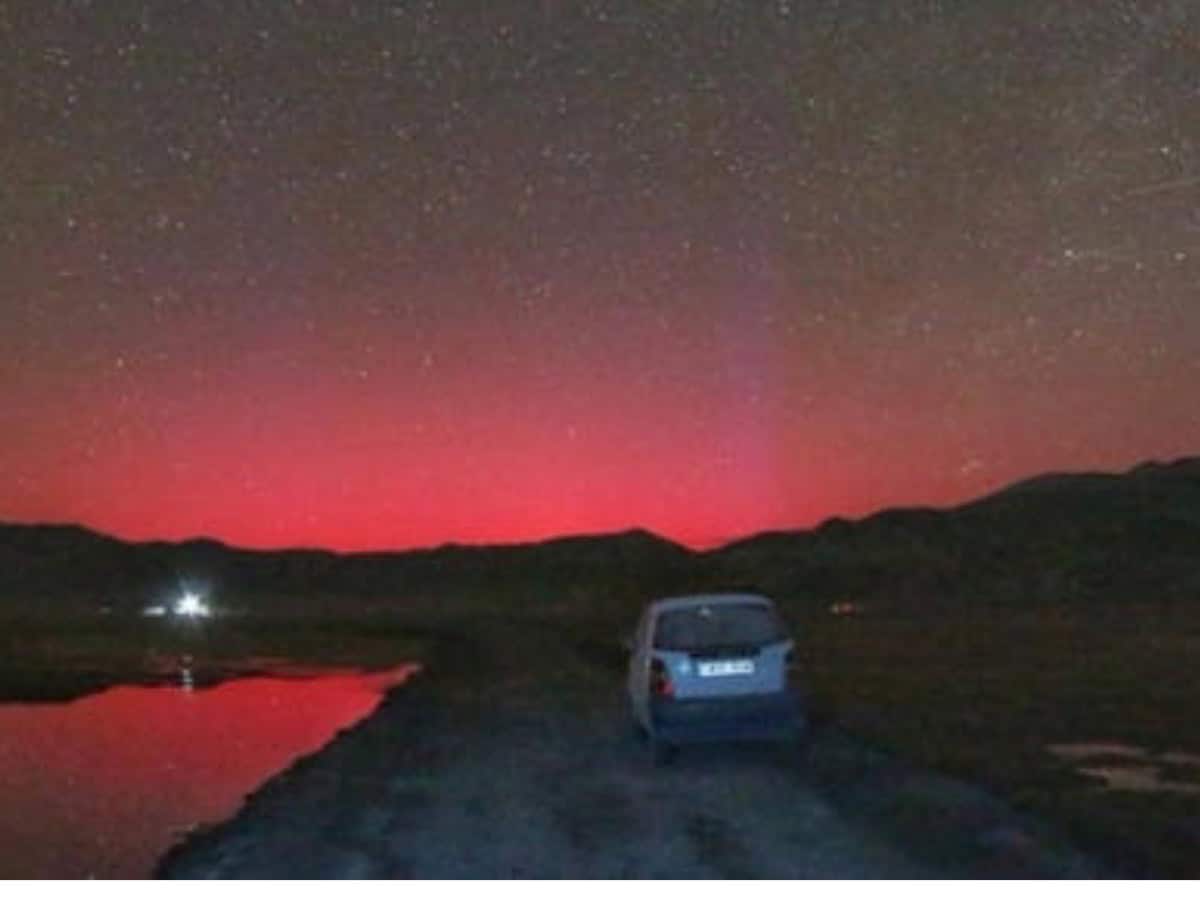
In the cloak of the night sky in Ladakh’s remote region of Hanle, Aurora was observed with hues of crimson red on Sunday, May 12, around 1 am, and it is expected to continue through the weekend.
With colours so bright, it painted a solar phenomenon closer to one affected earth in November 2003.
What is aurora?
Auroras are captivating ribbons of light that adorn the skies, often observed in the polar regions and known as the Northern or Southern lights.
They are created by magnetic storms, spurred by solar events like coronal mass ejections. These storms propel charged particles towards our planet through the solar wind. Upon penetrating Earth’s magnetic field, they cause sub-storms. Upon collision with oxygen and nitrogen molecules in the upper atmosphere, these particles emit radiant colours, showcasing the energy unleashed by their impact.
Why was it observed in Ladakah?
Reports indicate a surge in solar flare activity in space, with at least four potent solar storms impacting Earth between Friday and Saturday.
These storms originated from Coronal Mass Ejections (CMEs), massive eruptions of magnetic particles and plasma from the sun’s corona, the outer layer of its atmosphere. Emerging from AR13664, an active region on the Sun, on May 8, these CMEs raced towards Earth at a velocity of 700 km/second, reaching closest proximity to Earth’s atmosphere on May 10 and 11. This disrupted the otherwise tranquil space weather. Solar flares, traveling at a speed of 815 km/second, were detected upon their earthward collision.
According to Indian solar physicists, the intensity of these incoming solar storms was much higher than average.
How does solar storm affect Earth?
Intense solar storms can be harmful as they can interfere with and threaten the smooth operations of satellites operating in the Low Earth Orbit (LEO). The most common satellites functioning from the LEO are used for multiple purposes, such as navigation, military, intelligence, communications, etc. Thus, Earth’s satellite-based GPS, navigation systems, etc. could be vulnerable to solar storms.
Netizens around the world “stunned”
People around the world remained in awe as many other countries like Russia, Australia, Germany, and some parts of America also witnessed the rare phenomenon.
In Russia, the northern light was captured with “streaks of purple” and “according to the Canadian Space Agency, the color of the aurora depends on aspects including the composition of gases in Earth’s atmosphere, altitude, and density of the atmosphere.”



